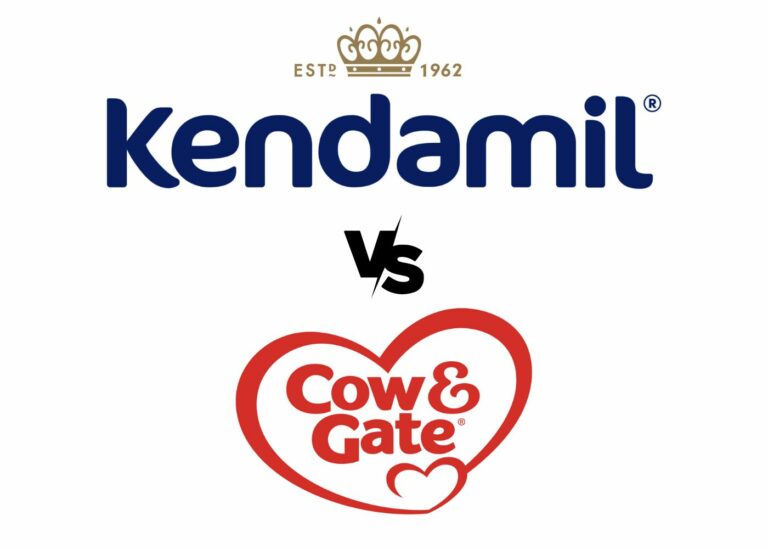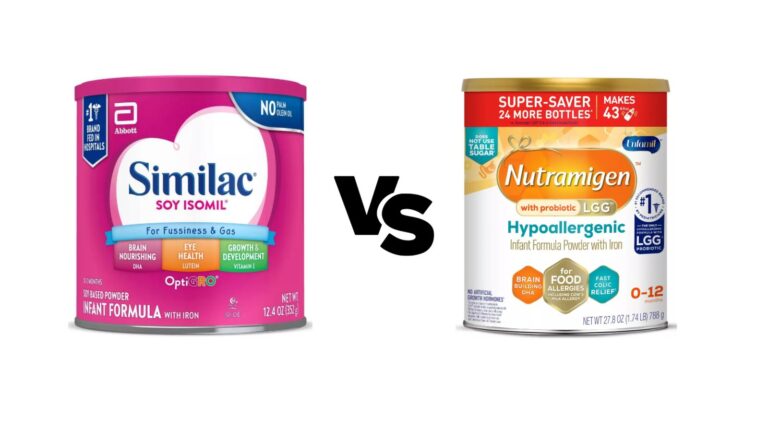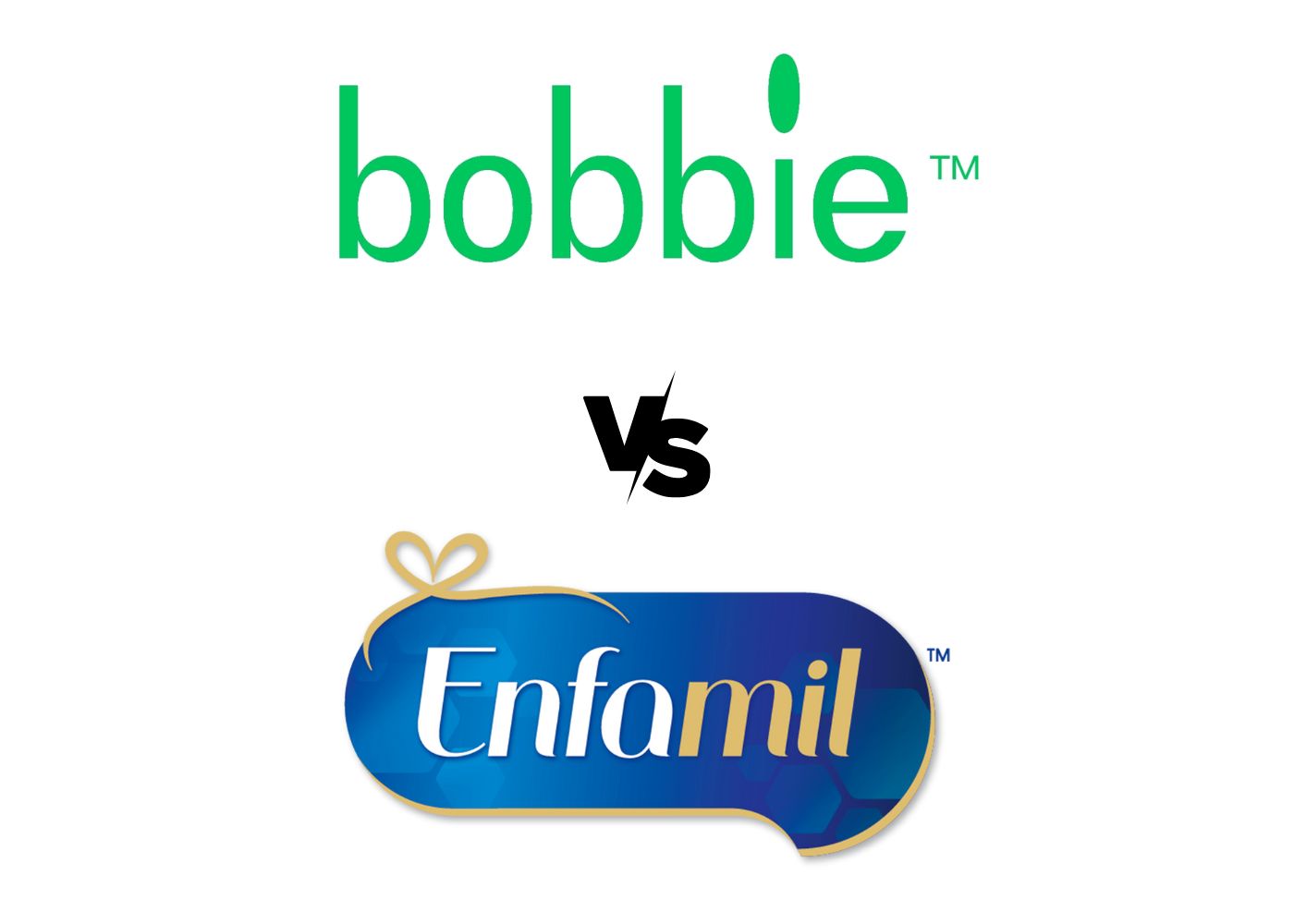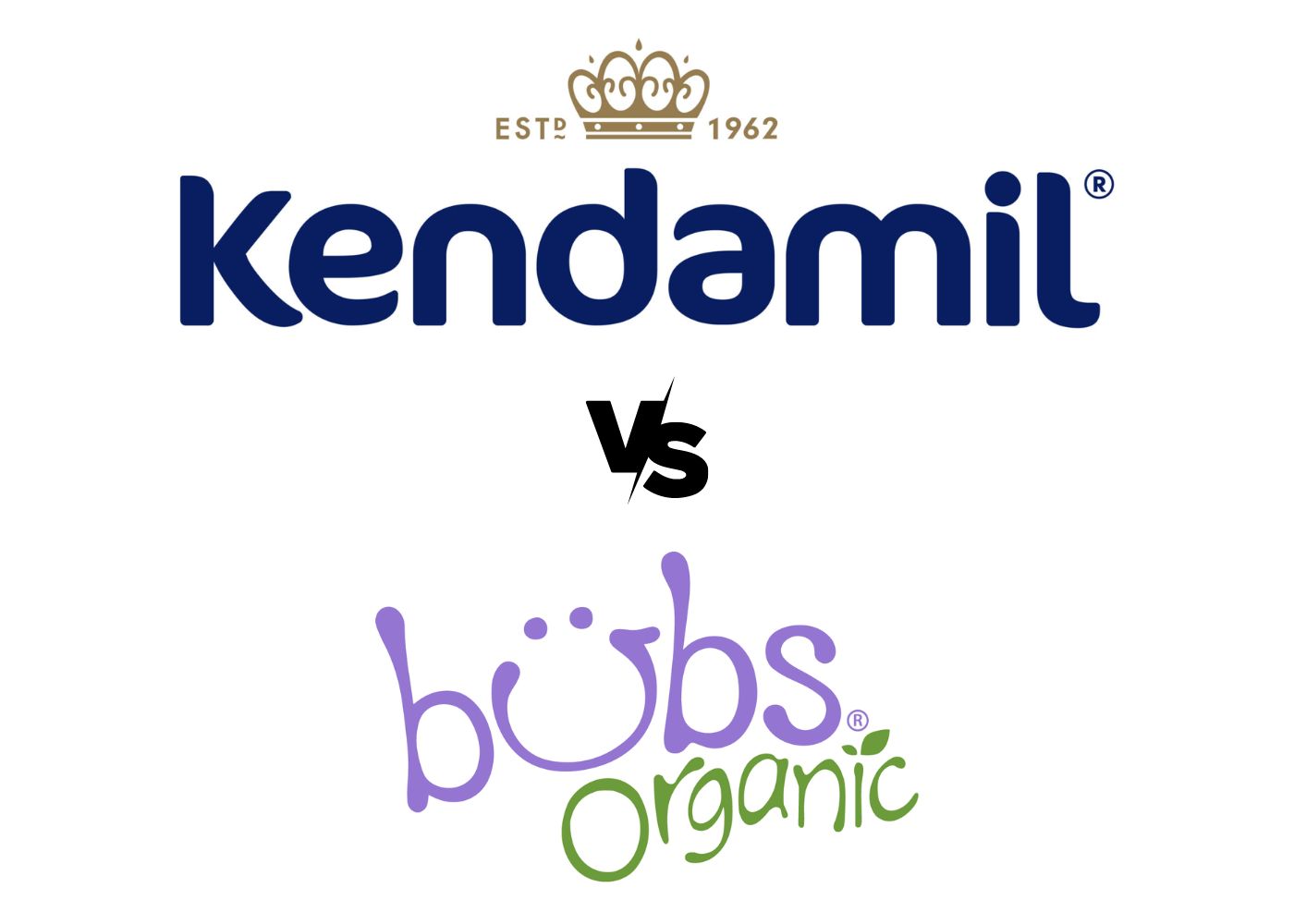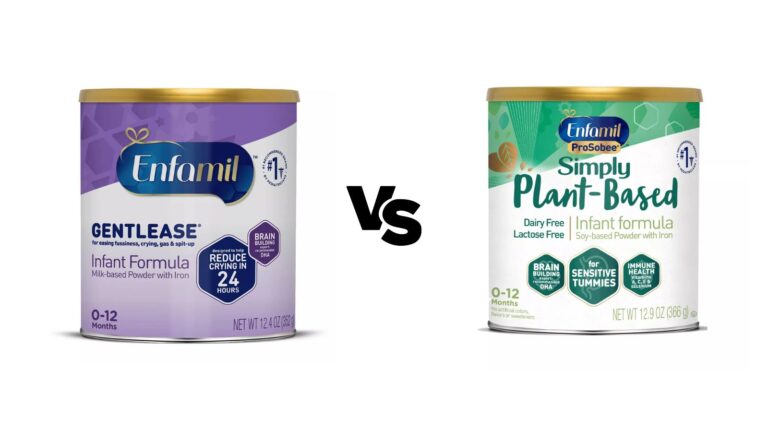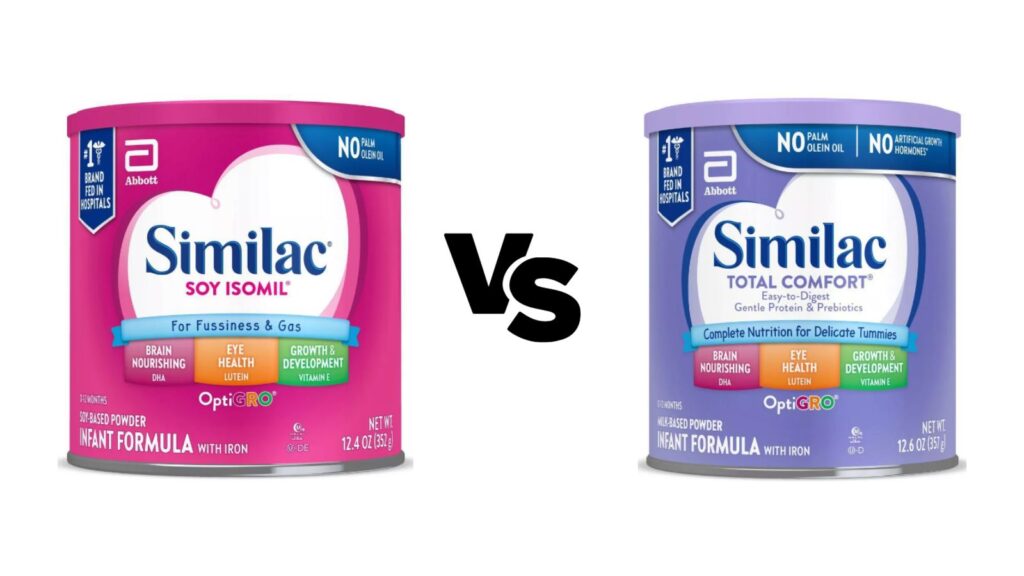
Key Differences Table Between Similac Soy and Similac Total Comfort
| Features/Aspect | Similac Soy (Isomil) | Similac Total Comfort |
|---|---|---|
| Ideal For | Babies with lactose intolerance or on vegetarian diet | Babies with sensitivities to cow protein or lactose |
| Type | Soy-based formula | Milk-based formula with partially hydrolyzed protein |
| Primary Protein Source | Soy protein isolate | Partially hydrolyzed whey protein |
| Carbohydrate Source | Corn syrup solids and sugar | Corn maltodextrin and sugar |
| Fats and Oils | Blend of vegetable oils (soy, coconut, safflower) | Blend of vegetable oils (soy, coconut, safflower) with DHA from Schizochytrium Sp. Oil |
| Nutritional Support | Fortified with DHA, lutein, vitamin E, and iron | Enriched with prebiotics, DHA, and the OptiGRO blend |
| Ease of Digestion | Designed for easy digestion, suitable from birth to 12 months | Partially hydrolyzed protein for easier digestion, suitable for sensitive stomachs |
| Prebiotics/Probiotics | Short-Chain Fructooligosaccharides (scFOS) | Galactooligosaccharides (GOS) |
| Specific Benefits | Lactose-free, caters to fussiness and gas relief | Aids in smoother digestion and softer stools, gentle on the digestive system |
This article will compare two popular Similac Baby Formulas: Similac Soy Isomil vs Similac Total Comfort.
We will analyze their nutritional composition and ingredients to help you make the best decision for your baby.
Let’s get after it!
***Important: Soy formulas are not recommended for infants younger than six months of age due to estrogen content and should not be used to treat CMPA until a pediatrician gives the okay.
Related read: Similac Soy vs Similac Advance
Our Short Answer
The choice between Similac Soy and Total Comfort will depend on your baby’s needs.
Choose Similac Soy if your baby:
- Is 6 months or older
- Has cow’s milk protein allergy and the pediatrician has given OKAY to use soy formula.
- Is lactose intolerant
*That said, if your baby has CMPA, we recommend first using an extensively hydrolyzed formula such as Alimentum or Nutramigen before choosing a soy formula.
Choose Total Comfort if your baby:
- Has sensitivities to cow protein or lactose, but falls short of severe intolerance or allergy.
We are not fans of soy formulas because, although nutritionally complete, they do not have the same bioavailability as animal-based formula. This is why it is always advisable to talk to a pediatrician before using soy formula.
Overview of the Two Formulas
Similac Soy Isomil, a lactose-free, soy-based formula, is designed for babies with lactose intolerance or dietary restrictions, offering essential nutrients like DHA and iron.
Similac Total Comfort, suitable for sensitive digestive systems, features partially hydrolyzed protein for easier digestion, prebiotics for softer stools, and the OptiGRO blend for overall development.
Similac Soy (Isomil)
Similac Soy is a soy-based infant formula designed for babies who may be sensitive to milk-based formulas. Here are key points about Similac Soy:
- Ingredient Basis: It contains soy protein isolate and is lactose-free, catering to infants with lactose intolerance or those with dietary preferences that avoid animal-derived milk proteins.
- Nutritional Profile: Similac Soy is fortified with iron and includes essential nutrients like DHA for brain development and vitamins C and E to support the immune system, mirroring the nutrient profile found in milk-based formulas.
- Specialty: Specifically designed for fussiness and gas relief, this formula may be a good choice for babies with minor feeding problems associated with the digestion of milk-based formulas.
- Compliance: The formula meets the FDA requirements for infant nutrition and is also certified kosher.
Similac Total Comfort
Similac Total Comfort is specifically formulated for infants with sensitive digestive systems, ideal for those who experience difficulties in digesting regular milk-based formulas or have a lactose sensitivity.
- Protein Composition: This formula features partially hydrolyzed protein, simplifying the protein molecules to smaller sizes for easier digestion by infants.
- Formula Benefits: Similac Total Comfort is enriched with prebiotics to promote softer stools and includes the Similac OptiGRO blend, which aids in the growth and development of the brain, eyes, and immune system.
- Digestive Comfort: It’s designed to be a gentler option for infants, aiding in smoother digestion and overall gastrointestinal comfort.
Nutritional Composition
Similac Soy uses soy protein isolate, suitable for lactose intolerance and milk allergies, but with lower bioavailability.
Similac Total Comfort features partially hydrolyzed whey protein, easier to digest for sensitive stomachs but not for those with diagnosed CMPA.
Both formulas use corn syrup solids for energy, with Total Comfort slightly better due to maltodextrin’s milder flavor and fewer simple sugars.
The fat blends are similar, but Total Comfort’s DHA source, Schizochytrium Sp. Oil, is preferable over Soy’s C. Cohnii Oil.
Protein Content
Protein is a vital nutrient in an infant’s diet for growth and development. Here’s how our two formulas compare:
- Similac Soy: The protein source in Similac Soy comes from soy protein isolate, a plant-based option free of dairy and lactose. It provides all the essential amino acids required for your baby’s growth. This can benefit babies with allergies or intolerances to cow’s milk protein.
- Similac Total Comfort: This formula utilizes partially hydrolyzed whey protein, which is milk-based but has been processed to break down the proteins into smaller pieces. These smaller proteins are typically easier for babies to digest, particularly those with sensitive stomachs. Partial hydrolysis also aims to minimize the potential for an allergic reaction compared to non-hydrolyzed milk proteins.
The protein in Isomil is plant-based, and it suitable for babies with cow’s milk allergies and lactose intolerants. However, it has less bioavailability than cow’s milk protein.
Total Comfort uses partially hydrolyzed protein, which is perfect for babies with sensitivities with milk protein, it has higher bioavailability than plant-based protein but can’t be used for babies with diagnosed CMPA.
*Learn more: Partially vs Extensively Hydrolyzed Formulas | Soy in Baby Formula
Carbohydrate Content
Carbohydrates provide vital energy for growing infants and support brain development. Let’s look at the sources from both formulas:
- Similac Soy: Since Similac Soy is lactose-free, it uses corn syrup solids (39%) and sugar (10%). These are chosen to ensure the formula offers an energy level comparable to that found in lactose-containing formulas.
- Similac Total Comfort: In Total Comfort, the primary carbohydrate is corn maltodextrin and sugar. This helps ease digestion for babies who experience discomfort with regular lactose levels but can tolerate a minimal amount.
Corn Maltodextrin is slightly better than Corn Syrup Solids because it has fewer simple sugars and a milder flavor. Corn syrup solids are the most common alternative to lactose in US-based formulas; however, they are not used in Europe.
*Learn more: Corn Syrup in Baby Formulas | Maltodextrin in Baby Formulas
Fats and Oils
Fats are a concentrated source of energy and help with the absorption of fat-soluble vitamins. They are also crucial for proper brain development. Below are the sources used in Similac formulas:
- Similac Soy: The fats in Similac Soy are derived from a blend of vegetable oils, which typically include soy oil, coconut oil, and high oleic safflower oils. This mix is designed to mimic the fatty acid profile of breast milk while avoiding animal-based fats.
- Similac Total Comfort: In Similac Total Comfort, the fat blend is the same. It also combines vegetable oils (soy, coconut, and high oleic safflower).
Both fat blends are exactly the same, except for the sources of DHA and ARA.
Similac Soy adds C. Cohnii Oil (DHA) and M. Alpina Oil (ARA) but Total Comfort uses Schizochytrium Sp. Oil (DHA) and M. Alpina Oil (ARA). On paper, Schizochytrium Sp. Oil is a better DHA source than C. Cohnii Oil.
*Learn more: DHA and ARA in Formula
Prebiotics and Probiotics
In baby nutrition, probiotics and prebiotics play an important role in fostering a healthy gut microbiome, which is pivotal for your baby’s immune system and overall health. Let’s take a closer look at these components in our featured formulas.
- Similac Soy: Similac Soy adds Short-Chain Fructooligosaccharides (scFOS), a type of prebiotic that comes from fruits, vegetables and some grains. They help promote digestion and improve mineral absorption.
- Similac Total Comfort: This formula contains galactooligosaccharides (GOS), a prebiotic typically derived from lactose. Prebiotics like GOS support healthy gut bacteria, which are essential for digestion and nutrient absorption.
Galactooligosaccharides (GOS) are often considered preferable for infants due to reasons closely related to their composition and how they mimic natural components found in breast milk.
Best Places to Buy Similac Formulas


Similac Isomil
Similac Total Comfort
What are the Best Alternatives to Similac Soy and Similac Total Comfort?
Even though Similac Soy and Similac Total Comfort may cater to the needs of many infants, it’s prudent to look into alternatives that might align better with your baby’s specific dietary needs or your preferences.
Similac Soy Alternatives
- Enfamil ProSobee: This soy-based formula alternative aims to be easy on the stomach and helpful for infants with fussiness and gas, much like Similac Soy. ProSobee is also lactose-free and designed for babies who need a milk-free diet. *Read: Similac Soy vs Enfamil Soy
- Gerber Good Start Soy: Gerber’s soy formula is another plant-based alternative to relieve feeding issues such as colic, fussiness, and gas associated with lactose intolerance. *Read: Similac Soy vs Gerber Soy
- Nutramigen: For babies with cow’s milk allergies or sensitivities, hypoallergenic formulas like Nutramigen can provide a proper diet without the allergens that trigger these reactions. *Read: Similac Soy vs Nutramigen
- Alimentum: This is a hypoallergenic formula from the Similac family itself and can be a suitable replacement for Similac Soy for babies with more severe milk protein allergies since it contains protein that’s been extensively hydrolyzed. *Read: Similac Soy vs Alimentum
Similac Total Comfort Alternatives
- Hipp HA: Hipp Hypoallergenic (HA) formula is specifically designed for babies at risk of allergies. It contains hydrolyzed proteins, which are easier to digest and less likely to create an allergic response in sensitive infants.
- Hipp Comfort: Ideal for babies with sensitive tummies, Hipp Comfort includes reduced lactose content and a special fat blend that may aid digestion.
- Hipp Anti-Reflux: This formula can be an alternative for babies with reflux issues. It has a thicker consistency that can help prevent episodes and contains prebiotics and probiotics.
More comparisons: Hipp HA vs Comfort | Hipp Comfort vs Anti-Reflux
Last Words
We hope this comparison between Similac Soy Isomil and Similac Total Comfort helps you make the best decision for your baby.
If you have further questions, do not hesitate to comment below or contact us through our homepage.
Happy feeding!
We’re Maria and Alberto, a married couple and educators who are nutrition enthusiasts. Even before we had kids, we were already crazy about nutrition.
We’d read scientific articles, watch videos from nutritionists, and spend hours listening to nutrition podcasts.
Today, we continue doing this, but in a different way, as we’ve learned to sift through the noise and trends. Nutrition, like any other field of knowledge, the more you read and learn, the more you develop a comprehensive understanding of reality, and that’s what has happened to us.
Before having our first child, we focused on learning everything we could about child nutrition, using the same techniques we had already employed, backed by our extensive knowledge in nutrition.
Our mission is to help other parents with their children’s nutrition, to help them become the best versions of themselves.
If we are what we eat and drink, which is absolutely true, let’s do it right!


